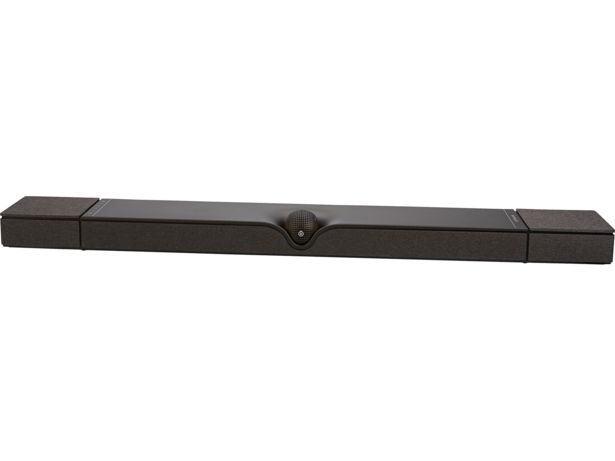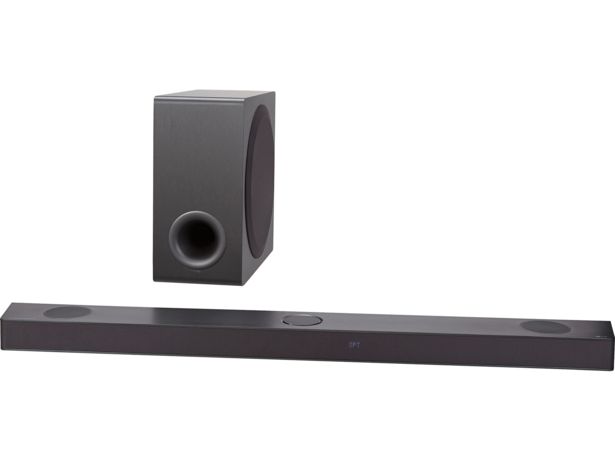Soundbars glossary

Soundbars are a compact alternative to home cinema systems which come with several speakers to be placed around a room. While soundbars are generally simpler to setup, many of the same technical terms are used when referring to their specifications.
Analogue audio inputs
The old method of connecting bits of audio equipment is with analogue inputs (red and white phono sockets and connectors). If you connect this way, some TVs allow you to use the TV's remote to control the volume of the soundbar. However, many new televisions no longer feature analogue inputs.
Cables
Cables from the cheaper end of the market will normally do the trick for soundbar set-ups. However, cheap cables used over 'long runs' may deteriorate sound. It's not as relevant for soundbars but, if you have a discerning ear or an expensive audio system, you will probably notice. We’d recommend you spend a minimum of £2 per metre and up to £10 per metre if you need to have decent terminals fitted.
Like HDMI cables, audio cables can go up to ridiculous prices with Oxygen-free cable, solid silver and even directional cable. These can generally be disregarded.
Compatibility
All the soundbars we’ve tested would work with any brand of TV. They will work with any size of TV too, but for aesthetic reasons they are best suited to particular screen size ranges (usually from 40 inches to 50 inches). A soundbar that's too long or short for your TV display might look a bit odd.
The good news is that, in most cases, there’s no need to attach the soundbar to the television. Soundbars are designed to sit on the same stand as the TV and fit underneath the screen.
Digital optical (Toslink)
On some TV brands, analogue outputs have been phased out and superseded by digital audio outputs, though many more feature both types. The most common is known as Toslink, or digital optical.
However, Toslink doesn't quite have the convenient functionality of some HDMI or even analogue inputs. Toslink carries surround sound as well as stereo, and is commonly used for connecting to home cinema systems.
Dolby Atmos
This is the newest development in surround sound and is supposed to create an authentic cinematic experience in the comfort of your own home. By bouncing sound waves off the walls and ceiling, it immerses you in captivating, moving audio that feels like it’s flowing all around you.
DTS:X
This surround sound format is similar to Dolby Atmos. It delivers cinematic, object-based sound.
HDMI ARC
A feature found on newer TVs, ARC stands for audio return channel. It's easy to spot as the socket on your TV will normally be labelled ARC (but check the user guide if in doubt or it doesn't work). A soundbar with an HDMI ARC socket has the advantage of having a single connection that can deliver digital audio and provide CEC remote control.
HDMI CEC
Most HDMI sockets support some sort of consumer electronics control (CEC) feature. This allows you to control other bits of CEC-enabled equipment, such as the volume and power of your TV, via just one remote control.
Different brands give CEC different names such as LG Simplink, Samsung Anynet+, Sony Bravia Theatre Sync, and Toshiba Regza link. Many manufacturers imply that their TVs will only link with AV equipment from the same brand, but basic CEC functionality usually works between brands - just make sure HDMI CEC is enabled.
Headphone port
Most soundbars have a 3.5mm mini-jack input, commonly referred to as a headphone port. This is useful for playing music from a portable audio device such as an MP3 player, but it can also be used for the TV if it's not possible to connect it via a digital connection. However, if both your TV and soundbar have a digital connection, such as HDMI or Toslink, we recommend using this instead.
Multi-room
Many soundbars now come with wi-fi connectivity that allows them to form part of a multi-room music system. Generally speaking, these only work with other speakers of the same brand. If you have a Sonos multi-room speaker system already, buying a Sonos soundbar might make more sense, for example.
Power usage
Soundbars don't tend to use too much extra power - usually around 10 watts or less, no more than a typical table-top radio. Many soundbars switch to standby if no signal is detected from the TV, but they don't tend to have an actual 'off' switch. We provide power information for each model in our reviews.
Subwoofer
Most soundbars have an additional speaker called a 'subwoofer', which is designed to deliver extra bass. It is often built into the soundbar, but some have an external subwoofer speaker which is about the same size as a bookshelf speaker. Sound is either passed to an external subwoofer over a wired (audio cable) or wireless (Bluetooth) connection from the soundbar.
This will normally be a big plus for film fans, but our experts feel the extra bass is probably excessive for serious music listening.
Watts
Audio power is measured in watts, which describes the energy output of the receiver or amplifier that powers a loudspeaker (such as a soundbar). The power output of all of the soundbar system's speakers (including the subwoofer) is normally stated as the total 'watts RMS'. The figure given for a soundbar's audio output shouldn't be confused with that stated for its power use which, confusingly, is also given in watts.
Watts aren’t actually a measure of volume - which is measured in decibels - but rather power. A higher audio wattage can result in a wider, richer range of sound, but this type of power doesn't always equate to quality, and sound quality is what counts.
So, a powerful soundbar isn't necessarily the best. Our listening tests assess the sound quality of speech, music, TV, and film across different tracks, so you can choose a soundbar that offers the best chance of improving your TV's sound. We've also provided the recommended audio settings from our listening tests in the 'full specification' tab of each soundbar review.
What features should you expect in a good soundbar?
Any soundbar worth its salt will have the below features as standard:
- Ease of use – useful features include a simple remote and a display and controls on the device
- Wide listening angles – it should sound the same wherever you’re sitting in the room
- High maximum volume – it should still sound good even at high volumes
- Good speech quality – dialogue in TV and movies should sound crystal clear
- Wireless connectivity – most soundbars have Bluetooth and some have wi-fi for a multi-room speaker set-up
- Good-quality connections – the best soundbars have HDMI ARC. Models with HDMI-CEC let you use one remote for the soundbar and your TV
- Attractive and practical design – it should be stylish and buttons on the bar should be easy to reach
Check out our best soundbars for a model that ticks all the boxes.



